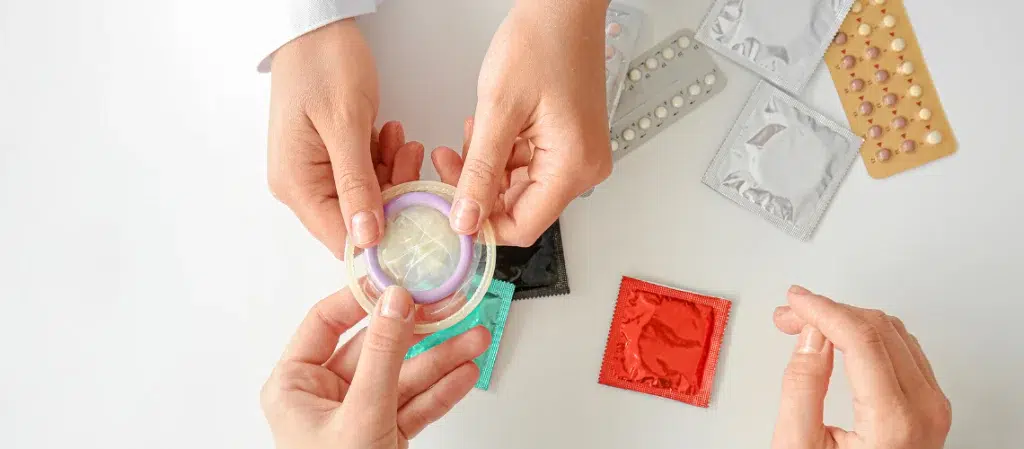The abbreviation LDL stands for Low Density Lipoprotein. This is also known as “bad cholesterol”. It is important for cardiovascular health that the amount of LDL cholesterol in your body is not too high. You can measure the value of LDL cholesterol with Homed-IQ’s Cholesterol & Lipids test.
What is cholesterol?
Cholesterol is produced in your liver and is an important building block for our body. We need cholesterol for the production of body cells, hormones, and bile.
What is the difference between LDL and HDL?
The “bad cholesterol” LDL is the counterpart of HDL (High Density Lipoprotein), which is also known as “good cholesterol”. LDL transports cholesterol from your liver to other cells in your body. HDL returns excess cholesterol to the liver, where it is broken down (Hartstichting).
Why is LDL cholesterol bad?
The level of LDL cholesterol in your body determines whether you are at greater risk of developing cardiovascular disease. If your LDL level is too high, cholesterol can deposit inside the arteries and form plaques. This causes narrowing of the arteries, which increases the chance of heart attack or stroke.
What is a normal value of LDL?
A healthy LDL value differs per person. Age and risk factors for cardiovascular disease play a role in this. Based on the medical guidelines for the prevention of cardiovascular diseases (Richtlijnendatabase, 2019) the following LDL target values have been established:
General target value: < 3.0 mmol/l
High risk for cardiovascular disease: < 2.6 mmol/l
Younger than 70 years with cardiovascular disease: < 1.8 mmol/l
Can LDL Cholesterol Be Too Low?
If you have a very low LDL cholesterol level, that’s good. Your liver makes cholesterol, and very little of it is needed to produce bile, cells and hormones. There is no scientific research showing that having a low LDL level poses a risk to your health.
How do I test my LDL value?
With Homed-IQ’s Cholesterol and Lipids test you can measure your LDL value from home. Using a simple finger prick test you can measure your HDL and LDL values, your total cholesterol level, and the triglyceride level in your blood. All Homed-IQ tests are always analyzed by a certified laboratory.
How many people have high cholesterol?
About a quarter of people in the Netherlands between the ages of 30 and 70 have a high cholesterol level.
How often should you test your LDL?
There are no set guidelines for the frequency of testing LDL. Therefore, you can request and perform an LDL test at any time. If the test shows that your LDL value is good, it may be useful to perform another test after a change in your lifestyle. Moments when taking a LDL test may be useful include:
- Reaching the age of 50 years
- After menopause
- Following significant weight gain or weight loss
- After changing medication
- With an increase in alcohol consumption
The causes of an elevated LDL value
There are several factors that cause an LDL level to be too high, such as:
- Heredity
- High-fat diet containing a lot of animal products
- Being overweight
- Diabetes
- Having underactive thyroid
Are there any diseases related to LDL?
LDL, like cholesterol, poses a risk to your health when the value is too high. Cardiovascular diseases and arteriosclerosis are the biggest health risks. The presence of other health problems, such as diabetes or high blood pressure, combined with too high an LDL level, puts you at an additional risk of angina (chest pain), heart attack, coronary artery disease, or stroke.
What are the consequences of an LDL level that is too high?
The build-up of bad cholesterol in your arteries from too much LDL makes it more difficult for the blood to flow through the vessels. Over time, this can gradually block an artery or cause a clot to block further down the artery. Clogged or blocked arteries can lead to heart attack, stroke, or death.
What should you do if your LDL level is too high?
Lowering the LDL cholesterol in your body is possible by adjusting your diet and exercising more. There are a number of foods that have a positive influence on improving LDL levels (Nutrition Centre):
- Whole grains, barley and oats
- Beans and other legumes
- Vegetable oil
- Apples, grapes, citrus fruits, strawberries
- Fatty fish
- Unroasted nuts
- Okra and eggplant
There are also foods that raise LDL cholesterol, such as fried foods that contain trans fats. These also occur in, for example, pastries and red meat. It is better to limit your consumption of these types of food as much as possible and opt for lean varieties of meat and milk. Other tips include:
- Moving more
- Losing weight
- Stopping smoking




